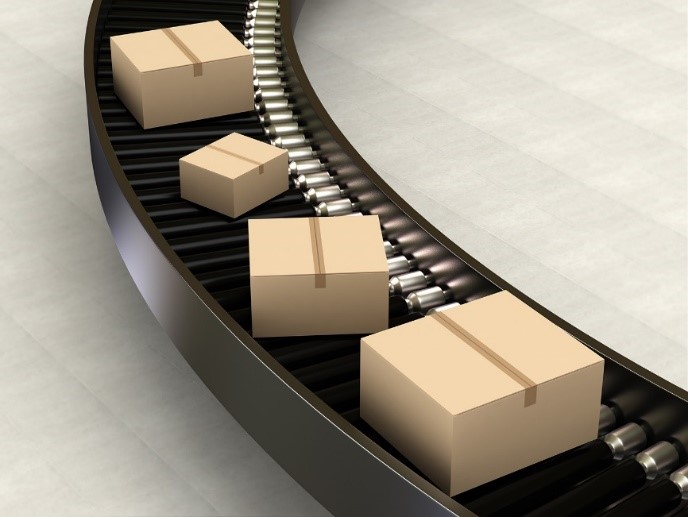packaging automation Trends in Industry

Collaborative robots packaging automation
Diversification, customization, and even smaller batch sizes cannot always be handle cost-effectively in mass production with automate high-speed processes. The tasks involve are often outsource to contract packers (“co packers”), who typically use expensive human resources to handle the complex processing of smaller batches and higher quality packaging. Conventional industrial robots therefore play a subordinate role in this area.
Trend in packaging automation
An obvious trend is the growing demand for collaborative robots (cobots), which are use directly next to humans without safety equipment: “This is not intend to replace traditional industrial robots, but to complement them and add new ones. Advances in automation, especially in collaborative packaging automation ,” Schlüter says. On the other hand, supporting humans with cobots opens up new possibilities: Equipped with vision systems, they can relieve humans of monotonous, tedious and physically demanding tasks, such as correctly aligning parts or lifting objects. In this way, they increase the efficiency and quality of human work.
cobots Design
The cobots are originally design for use in close proximity to humans, which means they operate with force and acceleration parameters that are safe for humans and specify in the ISO TS15066 safety manual. “Industrad Group is currently developing a new collaborative robot with the following features: no risk of injury from grinding edges, easy to clean surface and no clogging, while maintaining repeatability of ±0.02 mm compared to industrial robots. The prototypes are still in the testing phase, but have already been present to a wide audience at international trade shows,” says Malthe Schlüter.
Cobot Features
Another feature of the cobots is the ease of control and programming,. which can be carry out by train end-user company personnel. This eliminates the constant need for system integrators or external programmers. In addition,. they can be use quickly and flexibly in many applications in the packaging industry. Industrad Group prototype offers a variety of options for “training” the cobots. These range from manual movement into position, controll by the robot’s arm strength, to visual programming and user interfaces on tablets or mobile devices for calibration and setup.
Robots without safety barriers
For industrial robots, the market demands alternative safety solutions other than fences, barriers, cages and cages. This is because such safety measures take up valuable production space, result in high additional cleaning costs in hygiene areas and hinder full cooperation with employees. In addition, time-consuming restart procedures are require after an emergency shutdown or after opening safety barriers. Optical safety systems can be use instead. Laser scanners are often use to monitor certain areas around the robot. “Industrad Group offers a special feature that lowers the speed of our industrial robots in terms of safety. As soon as a person enters its outer zone, it slows down. If a person enters an area where there is a risk of direct contact with the robot, the robot stops immediately,” Malte Schlüter describes the solution.
Solution of Problem
Instead of guarding an area with light barriers and laser scanners, entire rooms are increasingly being monitor with camera systems. In the future, image processing systems equip with artificial intelligence (AI) will recognize when and where an operator enters a robot’s work area and regulate its speed. Thus, it will soon be possible to move freely and safely around robots. To achieve this goal, Industrad Group is already actively working with its partners to develop practical and market-ready solutions.
Artificial intelligence in packaging automation
In robotics, artificial intelligence describes the ability to react appropriately to unforeseen and unplan situations. For example, if a robot were to receive a product that deviate from the norm in terms of orientation, . geometry or packaging automation , it would not be able to recognize these deviations and react accordingly. Now, with artificial intelligence and appropriate vision systems such as sensors,. robotic systems can learn to detect these deviations . and adjust their processes. Industrad Group new MELFA FR series robots are now available . with artificial intelligence and can improve efficiency in industries such as food processing and life sciences.
More to AI
AI also comes into play when intelligent robots detect quality defects in products being package and replace them with flawless products in the process, even within individual packaging automation units. Robots that can be move manually or even mount on unman transport systems can also quickly recognize their new position and adjust processes using AI.
Data extraction
As part of the drive to improve EGE (overall equipment efficiency) through digitization, there is a strong demand for analyzing data that comes from production. In the first case, there is a recipe and production data for internal evaluation. In addition, the status and operating profile of peripheral equipment, such as robotic components like servo drives, can be capture. This provides valuable information, for example, on the condition of wear parts and possible contamination. The information obtain from the database enables the implementation of predictive maintenance strategies, which can significantly reduce maintenance costs. To further improve these strategies, Industrad Group is developing a new advance computer technology call MELIPC, which will be fully launch next year. It aims to add value to the manufacturer’s data by using advance analysis algorithms in the SR&ED plant floor.
Data Extraction category
Another important category of process data is data use to track and inform consumers, especially in the food sector. For example, these can be use to confirm compliance with the cold chain or to place information about the origin of the food on the packaging, which can be access via a QR code. “With Mitsubishi Electric, we can collect all data from PLCs, controllers and drives centrally and process it on site using modern IT technology. This reduces cloud storage costs and provides many other benefits for managing and monitoring production.”
Robots
“Robots are far from replacing all manual activities in the packaging industry,” concludes Malte Schlüter. “As intelligent and fully integrated ‘colleagues,’ they will help make work more convenient and creditable. This is no longer a dream of the future, because we have the relevant technology today, and it is cost-effective to use it.
Image 1: As intelligent and fully integrate ‘colleagues’, robots can help make work more comfortable and efficient.

Fig. 2: Industrad Group can collect all data from PLCs, controllers and drives centrally and process it decentrally using modern IT technology. This reduces the cost of storage in the cloud and offers many other advantages for production control and monitoring.






